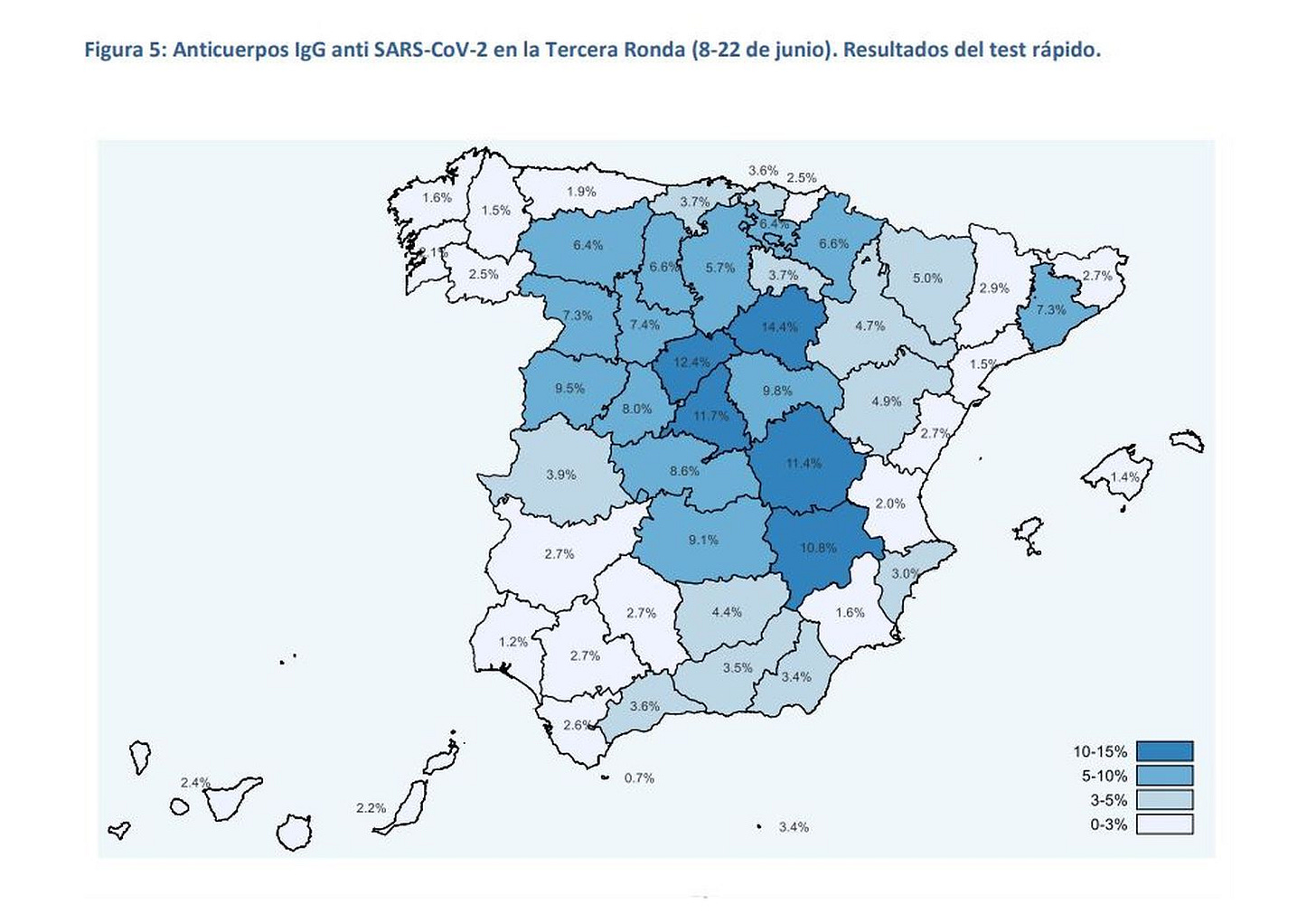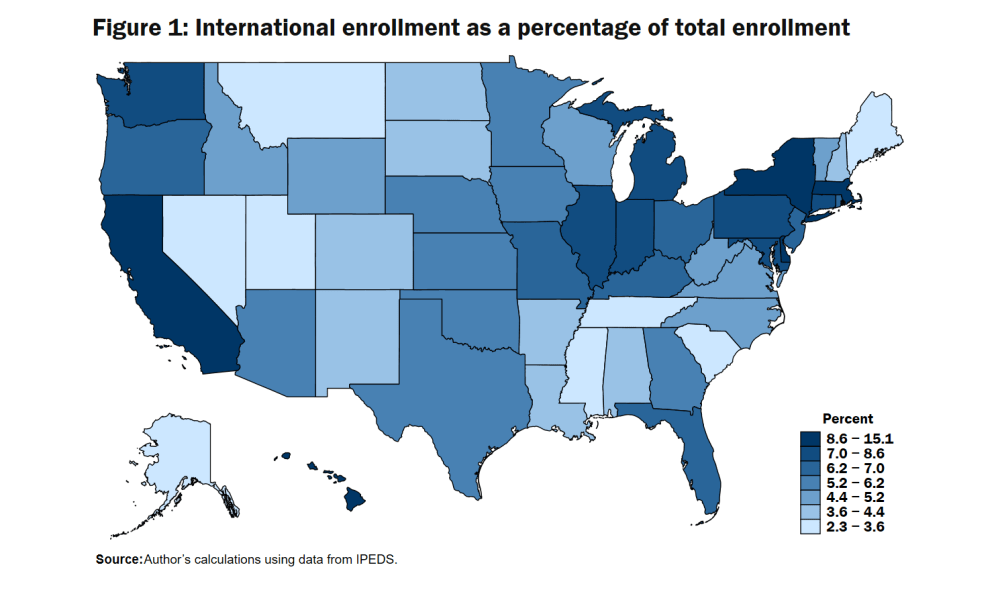Welcome to new subscribers. To those just joining us, Trajectory explores where the world is heading and the trends determining our future, delivered straight to your inbox.
The High-Level This Week: There are 4,000 universities in the United States that generate over $650 billion in revenue and educated 20 million people annually. A perfect storm involving declining revenues and state funding are putting many of these universities at risk of bankruptcy. Many will not survive. Is this the end of University Inc in the United States?
Read on and share your thoughts in the comments below!
This Week in Data
Spain, one of the worst hit countries of the pandemic, recently conducted a Covid-19 antibodies test on a random sample of 61,000 people across Spain. The chart below shows the prevalence of these antibodies of people by region in Spain.

Intellectual Sparks
A Letter on Justice and Open Debate: A deeply timely letter signed by over 150 intellectual luminaries defending the need for open debate in the face of growing illiberalism in public life in the West
Artists and Writers Warn of an ‘Intolerant Climate.’ Reaction Is Swift: An overview of some of the pushback to the letter above
Why Walking Helps Us Think: A great piece on the power of walking
Coronavirus: Nigeria’s ‘Fiscal Flu’: Nigeria, one of the world’s most populous countries, is one of the hardest hit economies in the world as a result of this pandemic
Freedom of Speech: A Right for Everybody, or Only for Like-Minded People?: An overview of an intriguing study on support for freedom of speech in the population
Editor’s Letter: The End of University Inc
Universities have long been critical components of public life and deeply formative institutions in the lives of many. Unlike in most nations, US universities also play a very active role in economic activity nationally thanks to their high tuition fees, extensive real estate holdings and the base of consumers and renters they bring to many small towns and cities. According to the Amercian Council on Education there are nearly 4,000 degree granting, two-year and four-year, public and private colleges and universities in the United States. Annually these institutions educate roughly 20 million people and generate revenues of $650 billion and employ an incredible 4 million people across campuses nationwide. Universities have important economic impacts in the regions they inhabit. For example, in 2018, the University of Notre Dame had a regional economic impact of $2.46 billion and supported 16,700 jobs.
However, universities in the United States have been facing growing financial pressure in recent years as the economic model that has sustained them for decades has increasingly fallen away. As state funding has dried up and enrollment for many of the lower-ranked universities have declined, many universities find themselves facing a precarious future. The Covid-19 pandemic however has created the perfect storm that may put an end to University Inc in the United States as we know it.
Universities in the United States are facing three interrelated challenges that many will not survive: declining enrollment, declining revenues and declining state funding.

Over 50% of the universities in the United States expect enrollment to decline by over 5% in Fall 2020 compared to Fall 2019. Similarly the Federal Student Aid program (FAFSA) has seen FAFSA renewals for returning students decline by nearly 5% (about 350,000 fewer students) for the academic year 2020-2021 compared to last year.
Declines in enrollment are life-threatening for most universities, as tuition is the primary source of revenue for most universities. Edmit, a college planning tool for parents and high school seniors, examined financial trends at 937 private universities. The company conservatively estimated the Covid-19 impact as tuition losses of 10 percent in 2020 and 20 percent in 2021, a 20 percent decline in endowment earnings, and an offsetting 10 percent reduction in spending on salaries. Based on these estimates, a shocking 345 of the 937 colleges they studied will run out of money in 6 years.
Recent action by the Trump administration will only worsen this decline in enrollment. This week the US Immigration and Customs Enforcement Agency announced new guidelines that international students on F-1 or M-1 visas that are taking classes fully online will be required to leave the United States for the duration of their online classes. This has caught most universities off guard, many of whom are considering moving the fall semester or the entire academic year 2020-2021 online for public health reasons. The increasing difficulty and uncertainty of acquiring a visa to study in the United States is pushing international students to study in other countries such as Canada, Australia, and the United Kingdom.

While tuition is a major source of revenue for most universities, many universities have diverse revenue streams that include services such as hospital revenue, sports revenue, and state funding. According to the American Center for Progress:
“In just one example of the brutal math that college leaders are facing, Rutgers University—a public university system serving more than 71,000 students—has spent $50 million to refund students for unused campus services such as dining, housing, and parking as a direct result of the pandemic. In addition, the university system will lose $60 million resulting from canceled surgical procedures at Rutgers medical centers. On top of that, the Rutgers system is losing another $73 million in state appropriations for the extended fiscal year that ends on September 30, 2020, after Gov. Phil Murphy (D-NJ) announced a state spending freeze.”
Despite federal funds from the CARES and Heroes act to support universities, the declines in revenues are affecting all universities.
For example, Georgia’s 26 public colleges and universities estimate that they will lose $150 million in foregone summer revenue on top of the $200 million they have already lost in canceled events. Altogether, that means that Georgia’s public institutions are facing a $350 million revenue loss by the end of summer, which is nearly three times the $125 million they’ve received through the CARES Act to address institutional costs”

The headwinds facing University Inc in the United States are severe. In fact, Harvard Business School Professor Clayton Christensen (the author of The Innovator’s Dilemma) declared as early as 2017 that 50% of the United States’ 4,000 universities would fail in the next 10 - 15 years. This was before the sledgehammer that is the Covid-19 pandemic hit University Inc.
The final nail in the coffin of University Inc may be the rise of online and distance-learning. The universities that are best insulated against the current challenges are the most prestigious and elite universities. Harvard for example is unlikely to face a meaningful drop in enrollment and it also has a $41 billion endowment as a safety net to draw from. Harvard also declared recently that it the entire 2020-2021 academic year would be conducted online and that it would charge its full $50,000 tuition for attendance. A successful year online would completely upend the traditional university model of in-person learning. The elite universities of the world would then only be a few steps away from offering distance learning to anyone globally for a fee. Why then would a student attend many of the 4,000 universities in the United States in-person if - for a hefty fee - it could attend Harvard online from the comfort of their home or from any exotic location worldwide?
The challenges facing University Inc may ultimately usher in a new era of education. One where the role that elite universities have historically played as gatekeepers on knowledge, prestige and access begins to fall away and the very best education becomes available to any-and-all (with or without a fee). The world may ultimately end up having fewer better universities serving millions more students. Democratizing the best education and making it available to anyone with ambition and curiousity is the best path to building better societies and a better world.


